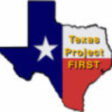A B C D E F G H I J K L M N O P Q R S T U V W X Y Z
Child Find (Agencia que localiza a niños con discapacidades) – State-developed policies and procedures to ensure that all children with disabilities residing in Texas, and who are in need of special education and related services, are identified, located and evaluated.
Children’s Learning Institute (CLI) (Centro para destrezas académicas y de la lectura) – The Children’s Learning Institute (CLI) at McGovern Medical School at UTHealth is a preeminent resource for learning solutions that produce tested, proven, effective results through scientific research and evidence-based interventions. CLI programs include the Texas Literacy Initiative.
Child with a Disability (Niño que tiene alguna discapacidad) – A student, age 3-21, who has a “disability” according to one of the 13 disability categories defined under the IDEA, and who is in need of special education and related services. See also Diagnosis vs. Disability Label.
Code of Federal Regulations (CFR) (Código de reglamentos federales) – A multi-volume set of documents that organizes the rules and regulations that are published in the Federal Register by departments and agencies of the Federal Government. The CFR is divided into 50 major headings, called “titles”. Regulations are listed under the appropriate title by a system of CFR numbers. (For example, Title 34 is “Education”. The regulation pertaining to FAPE under the IDEA is published as 34 CFR 300.101(c).) Each volume of the CFR is updated and printed once each calendar year.
Community Resource Coordination Groups (CRCG) (Grupo para la coordinación de los recursos comunitarios) – An interagency group comprised of public and private child-service providers that meets on a regular basis to review service needs and provide limited case management services for students who have multiple personal and family needs.
Complaint (Queja) – Written action taken to notify the Texas Education Agency (the state education agency) and a school district that special education regulations are not being followed by the school district. A complaint must include the name & address of student, the violation that occurred, and offer a possible resolution to the complaint. It must be sent to both TEA and the school district superintendent.
Consent (Consentimiento) – Written permission required before the school evaluates a student for special education services for the first time, places a student in the special education program for the first time, or reevaluates the student to determine the continued need for special education services. Written consent is also needed before the school can release confidential information from a student’s education records. (The exception is when the district releases the student’s records to another school district where the student has moved.) Consent is voluntary and may be withdrawn at any time.
Continuous Improvement and Focused Monitoring System (CIFMS) (Mejoramiento continuo y sistema de monitoreo enfocado) and Continuous Improvement Monitoring Process (CIMP) (y Proceso de monitoreo del mejoramiento continuo) – Accountability measures developed and put into place by the U.S. Department of Education, Office of Special Education Programs (OSEP). The purpose is to ensure that States are complying with the rules and regulations of IDEA. The goal is improved results for infants, toddlers, children, and youth with disabilities.
Co-Teaching (Co-enseñanza) – This occurs when general education and special education teachers work together to teach students who have a range of abilities, including students with disabilities, in the general education classroom. Both teachers take part in planning, teaching and evaluating students’ performance. TEA offers a guide on Co-teaching for Reading Instruction.
Courses of Study (Materias requeridas) – Middle school, high school and college course work (or classes) needed to obtain a certain type of diploma. See also Academic Achievement Record.
Curriculum Based Measurement (CBM) (Evaluación basada en el currículo) – A method teachers use to find out how students are progressing in basic academic areas such as math, reading, writing, and spelling.
Curriculum Framework (Estructura del currículo) – The STAAR Alternate 2 Curriculum Framework documents list the reporting categories, knowledge and skills statements, and student expectations tested by STAAR in each grade and subject or high school course. This can be a useful document for developing goals and objectives for students who required modified curriculum as it lists the prerequisite skills through grade level skills under each objective for the grade level.




